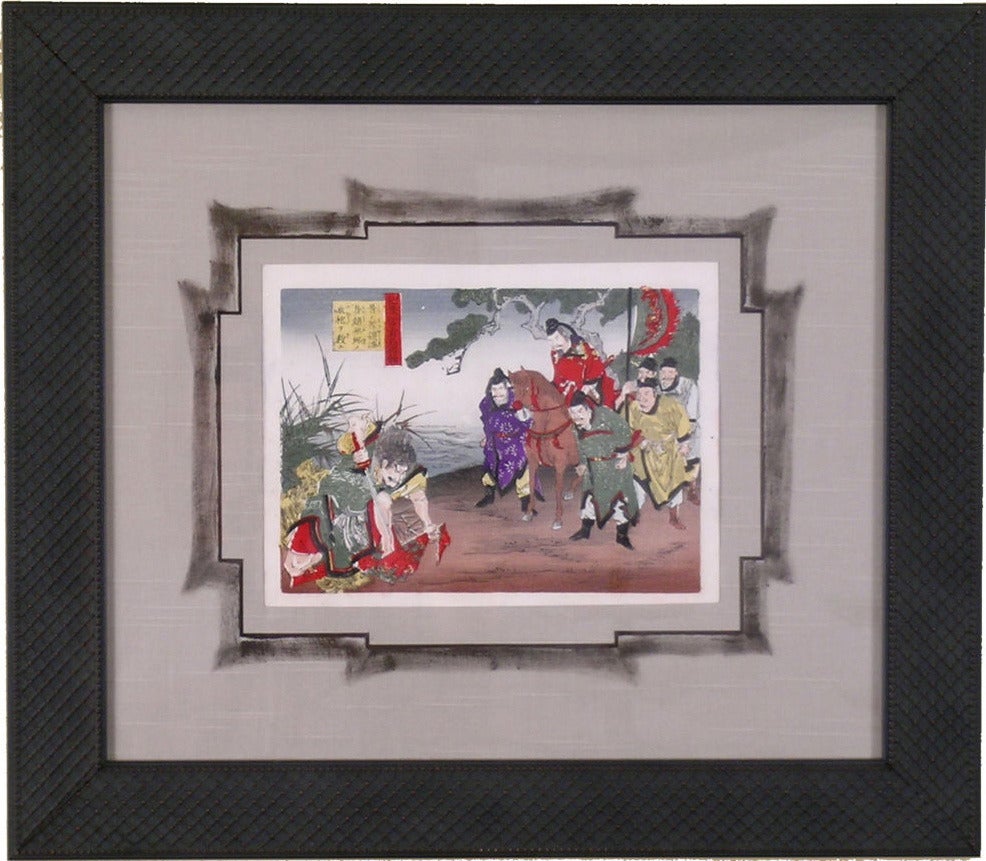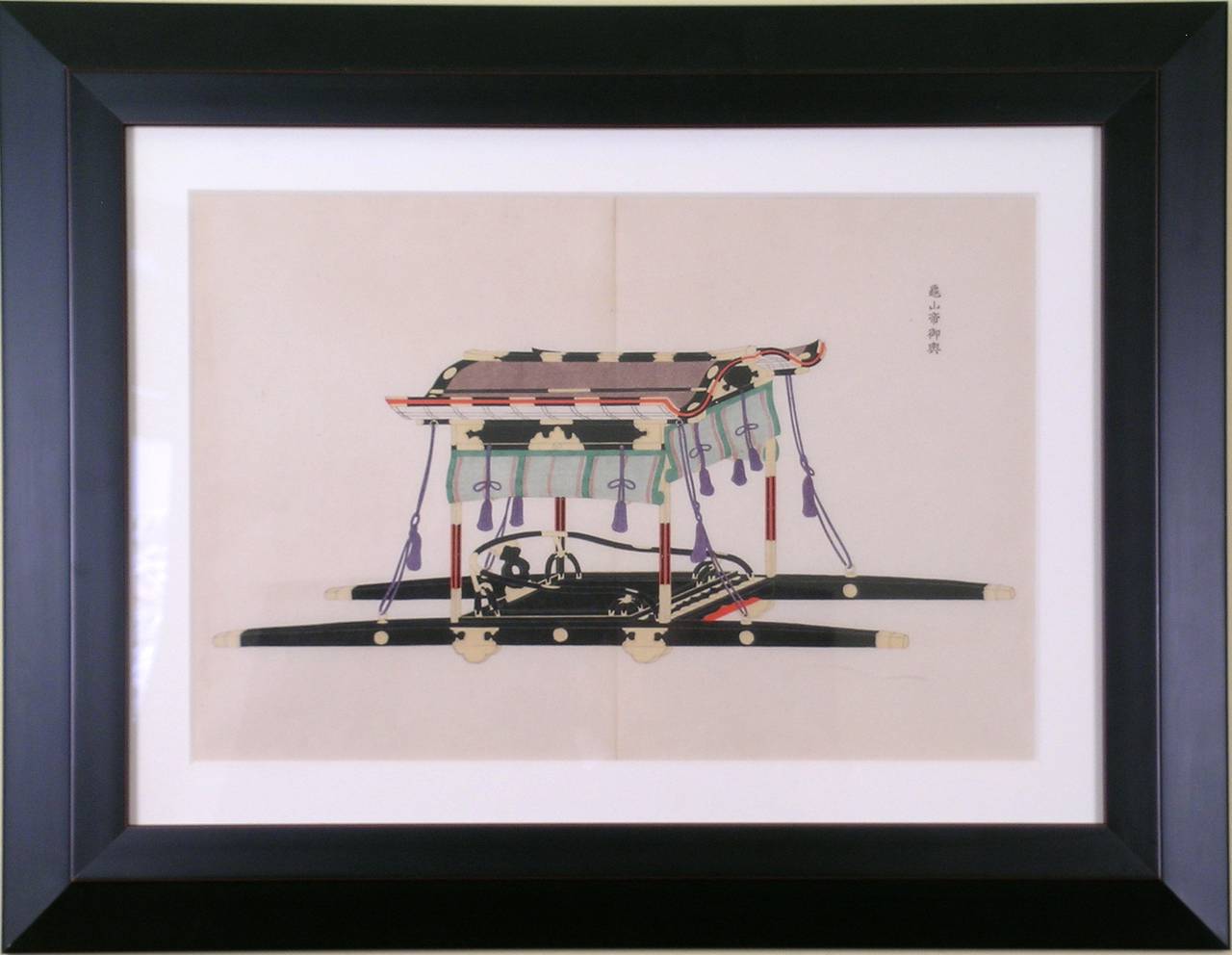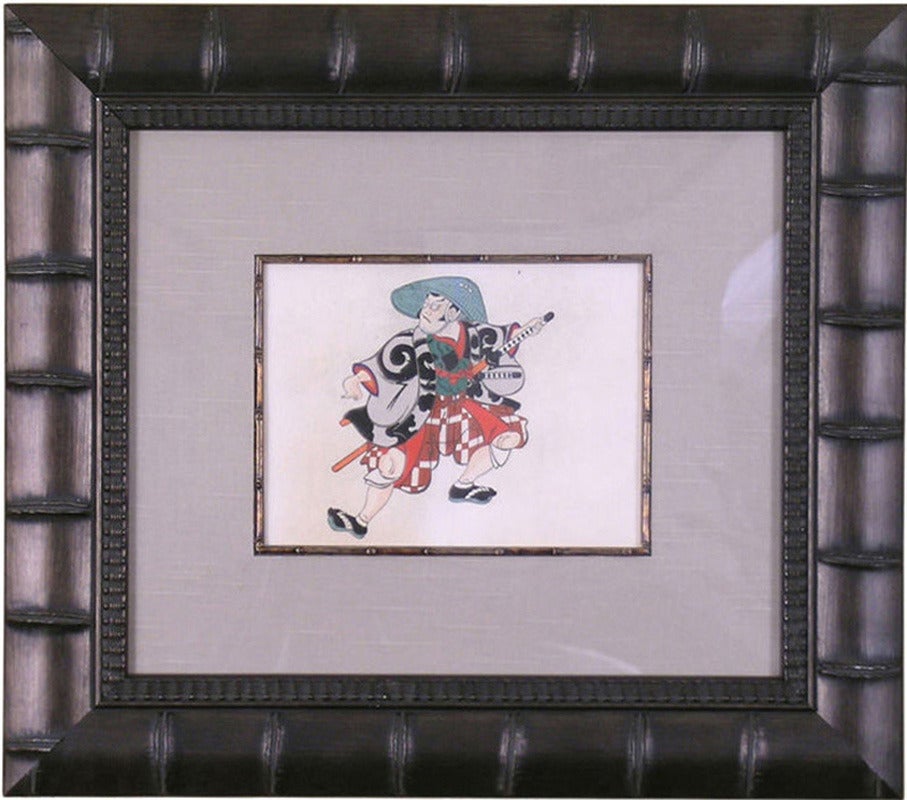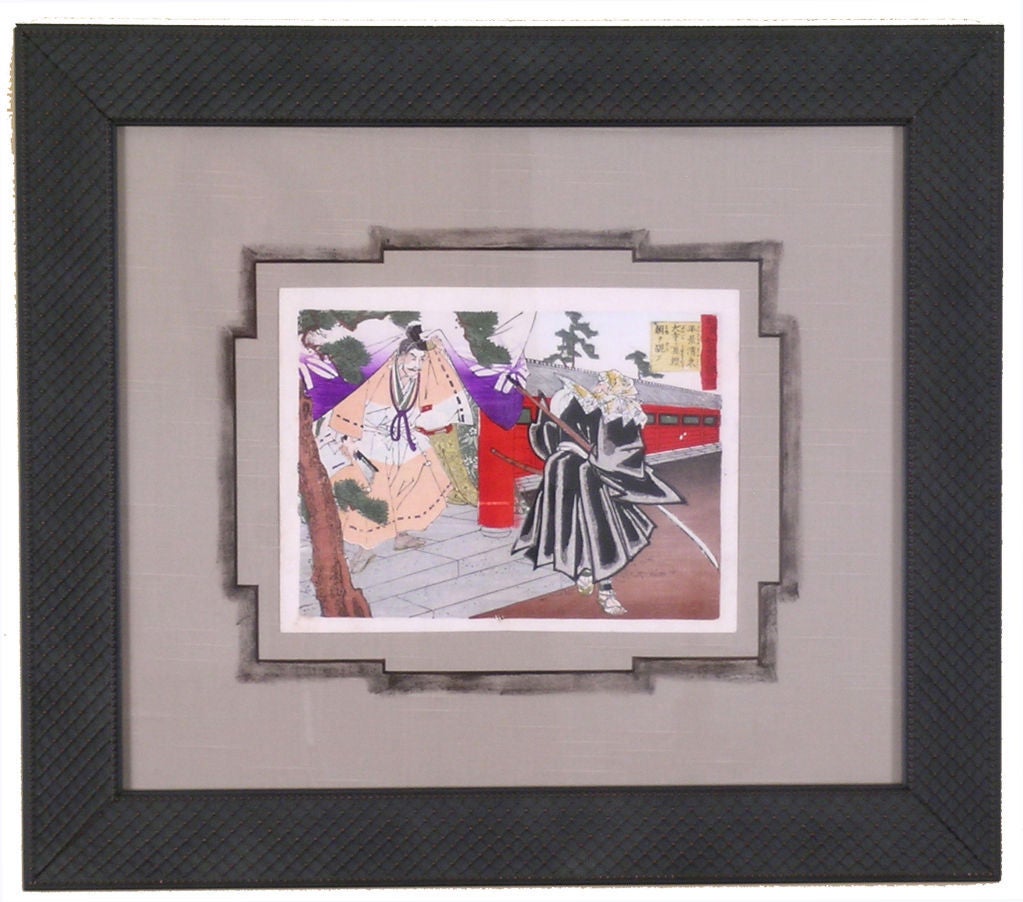Want more images or videos?
Request additional images or videos from the seller
1 of 5
Yosha Zuko FuzuTransport: Litter with 18 Menca 1900
ca 1900
About the Item
Yosha Zuko Fuzu
Meiji 33 (1900)
Writer: Kosugi Onson, Imaizumi Teisuke
Publisher: Yoshikawa Hanshichi
The Japanese litters and palanquins are much more than a practical vehicles for transport. They can also be a symbol of wealth and power. Every detail has a special significance. The quality, quantity, color and design of the hand-made embroidered silk fabrics add to the status of the passenger. The number of oxen needed and the hand-painted design of the palanquin and length of the yokes determine social class. Of course, there are man-powered litters as well. In each illustration we see the robe, sashes and hats worn by the carriers all adding to the worth of the patron. Of special significance is the color saffron denoting great extravagance. Each example holds a fascination in the meticulous attention to the smallest addition of a piece of trim and in the way a single knot is tied.
This work illustrates finely made and ornamented covered litters and palanquins to be carried by as many 15 men or several oxen. Every detail and movement is directed by additional staff. Only a very important individual could afford such extravagance.
Woodblock printing flowered in the Edo Period, mid to late 19th century, and is still considered an art form of great precision and beauty. The illustrations of these carts capture both the vitality and life inherent in the images of man, beast and carriage in each color woodblock print. Following the artist sketch, an image is carved into a block of wood. Black inks form the outline of the subject and color inks are applied to specific areas. The woodblock is then pressed to hand-made screened paper which is then hung dry. The entire process of composing a single image can take weeks.
- Creator:Yosha Zuko Fuzu (Japanese)
- Creation Year:ca 1900
- Dimensions:Height: 21 in (53.34 cm)Width: 27 in (68.58 cm)
- Medium:
- Movement & Style:
- Period:
- Condition:Clean, crisp image. Beautiful original color. Framed to museum specifications using archival matting, backing, hinging. Glazed with ultra-violet filtering Plexiglas.
- Gallery Location:Florham Park, NJ
- Reference Number:
About the Seller
5.0
Vetted Seller
These experienced sellers undergo a comprehensive evaluation by our team of in-house experts.
1stDibs seller since 2014
164 sales on 1stDibs
Typical response time: 2 hours
- ShippingRetrieving quote...Ships From: Florham Park, NJ
- Return PolicyA return for this item may be initiated within 1 day of delivery.
More From This SellerView All
- Samurai: Looking OnLocated in Florham Park, NJSamurai Warriors Meji 33 ( 1900) Woodblocks Original Hand-Color Woodblock printing flowered in the Edo Period in Japan, mid to late 19th century, and is still considered an art form of great precision and beauty. This style captures both the vitality and life inherent to the flower. Following the artist’s sketch, an image is carved into a block of wood to be transferred to paper in the same manner in which a painter applies his art to a canvas. Black inks form the outline of the flower and color inks are applied following nature’s guide. The woodblock is then pressed to hand-made screened paper which is then hung to dry. This lengthy process of composing a single image can take weeks. These images reflect a quality similar to watercolor and graphite resulting in a stunning and life-like portrayal. Samurai were the military nobility of medieval and early-modern Japan. According to translator William Scott Wilson...Category
Early 1900s Academic Prints and Multiples
MaterialsWoodcut
- Transport: One LitterBy Yosha Zuko FuzuLocated in Florham Park, NJYosha Zuko Fuzu Meiji 33 (1900) Writer: Kosugi Onson, Imaizumi Teisuke Publisher: Yoshikawa Hanshichi The Japanese litters and palanquins are much more than a practical vehicle...Category
Early 19th Century Academic Prints and Multiples
MaterialsWoodcut
- Ikebana - Carnations and AstilbeLocated in Florham Park, NJIkebana Japanese Woodblocks. Meiji Period. Circa 1895. A disciplined art form, Ikebana seeks to bring nature and man together. The emphasis is on form and simplicity of design...Category
Late 19th Century Academic Prints and Multiples
MaterialsWoodcut
- Kabuki Theatre: FuwaLocated in Florham Park, NJKabuki Theatre Meji 33 (ca1900) Woodblock Original Hand-Color. Woodblock printing flowered in the Edo Period, mid to late 19th century, and is still considered an art form of gre...Category
Early 1900s Academic Prints and Multiples
MaterialsWoodcut
- Kimono in Red and Green (Front and Back)Located in Florham Park, NJREISHIN GACHO (Album of Beautiful Designs) Japanese Kimono Designs Matsui Yuoku, Painter Japan, 1900 (Meiji 33) Honda Ichijirou, Publisher Woodblock Prints Celebrated as mu...Category
Early 1900s Academic Prints and Multiples
MaterialsWoodcut
- Samurai: Surprise AttackLocated in Florham Park, NJSamurai Warriors Meji 33 ( 1900) Woodblocks Original Hand-Color Woodblock printing flowered in the Edo Period in Japan, mid to late 19th century, and is still considered an art...Category
Early 1900s Academic Prints and Multiples
MaterialsWoodcut
You May Also Like
- Louis I of France as a Roman Emperor, in profile to the rightBy Christoffel JegherLocated in Fairlawn, OHLouis I of France as a Roman Emperor, in profile to the right Chiaroscuro woodcut, 1631-1633 Unsigned (as usual) After a drawing by Hubert Goltzius (1526-1583)...Category
17th Century Academic Portrait Prints
MaterialsWoodcut, ABS
- Greek Architecture Blueprint of Ancient Amphitheatre Cyanotype Print, WatercolorBy Kind of CyanLocated in Barcelona, ESThis is an exclusive handprinted limited edition cyanotype. Details: + Title: Ancient Roman Amphitheater + Year: 2022 + Edition Size: 50 + Stamped and Certificate of Authenticity provided + Measurements : 70x100 cm (28x 40 in.), a standard frame size + All cyanotype prints...Category
2010s Academic Still-life Photography
MaterialsPhotographic Film, Woodcut, Emulsion, Watercolor, C Print, Color, Lithog...
- Flowering Peppermint Plants: A 17th C. Besler Hand-colored Botanical EngravingLocated in Alamo, CAThis is a hand-colored copper plate engraving entitled "Pulegium Cervinum, Pseudo Pulegium Struthium, Pulegium Regium", depicting flowering Peppermint, Weld and Pennyroyal plants res...Category
1640s Academic Still-life Prints
MaterialsEngraving
- “Innocent Captivation Amusement Pastorale”By Anthony CardonLocated in Southampton, NYOriginal stipple engraving on a verge type of hand laid paper. The overall size of the engraving is 15.75 inches by 12.75 inches The image size of the engraving is 14 inches by 12 i...Category
Early 1800s Academic Figurative Prints
MaterialsEngraving, Laid Paper
- Glengairn, Aberdeenshire - Signed Lithograph, Royal Art, Scotland, BritishLocated in Knowle Lane, CranleighGlengairn, Aberdeenshire, January by His Majesty King Charles III - Hand Signed Limited Edition Lithograph. Belgravia Gallery has been ...Category
Early 2000s Academic Landscape Prints
MaterialsLithograph
- Wensleydale from Moorcock - Signed Lithograph, Royal Art, Yorkshire, LandscapeLocated in Knowle Lane, CranleighWensleydale from Moorcock by His Majesty King Charles III (created when he was HRH Prince Charles, The Prince of Wales) - Hand Signed Lim...Category
1990s Academic Landscape Prints
MaterialsLithograph
Recently Viewed
View AllMore Ways To Browse
Antique 18
Transport For
Japanese Silk Prints
Antique Print Fabric
Antique Print Silk
Carriage Prints
Trolley Art And Antique
All Japanese Woodblock Prints
Mens Ties
Mens Used Ties
Men In Tie
Woodblock Print Of A Beauty
Japanese Wood Block Prints
Mid Century Wood Block Print
Dries Men
Mens Ornament
Hand Blocked Print Fabric
Writers Block





